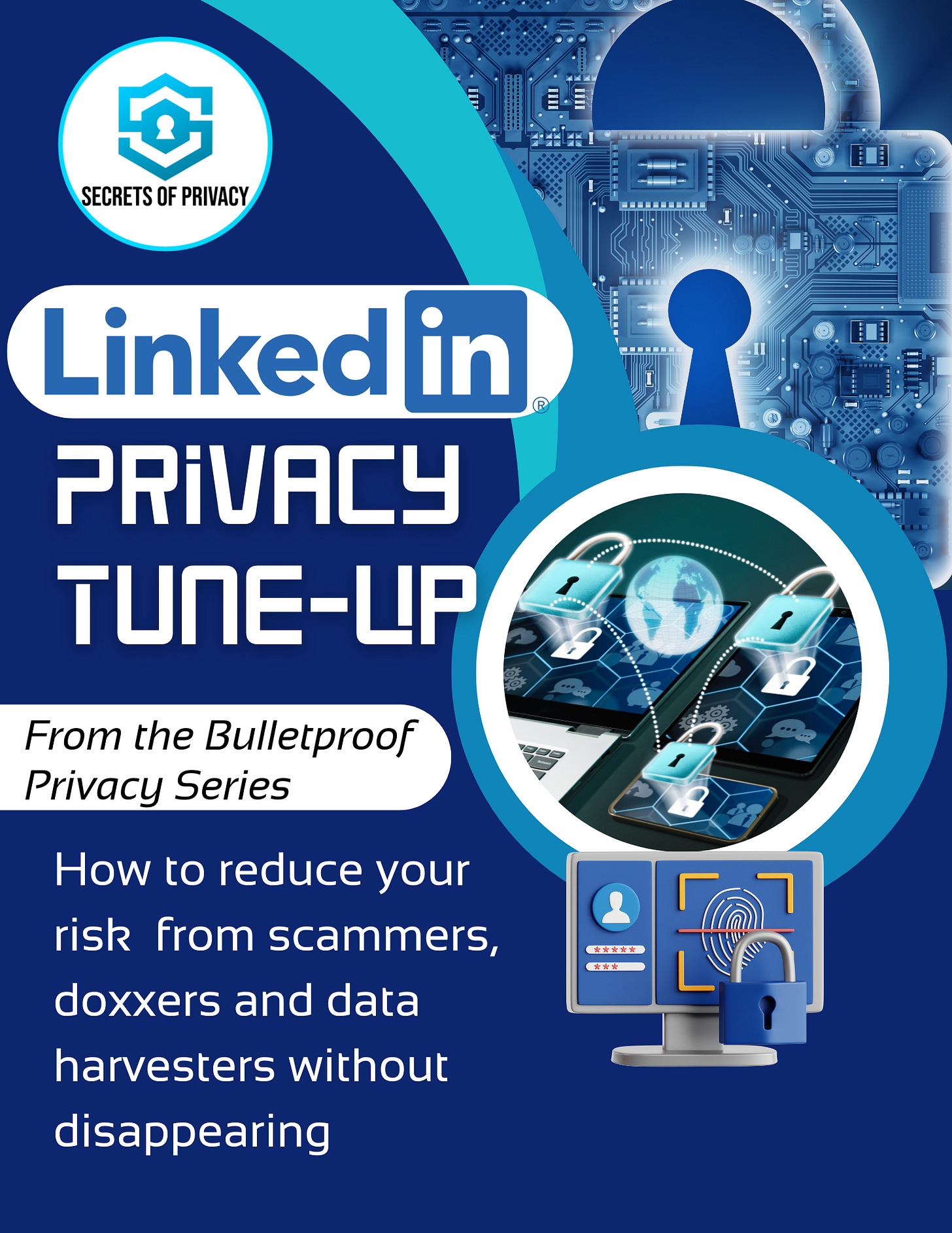The LinkedIn Profile That Made Her a Target
A cautionary story for anyone with a public-facing profile
Jordan West wasn’t a public figure. She wasn’t controversial. She was just a senior executive at a healthcare company with a polished, professional LinkedIn profile.
Her profile looked like anyone else’s:
Full name
Current job and employer
City
Profile photo
A mention of her volunteer work on a local parent teacher association
Nothing unusual. No politics. No drama.
But when her employer was pulled into a high-profile public controversy, someone decided to retaliate. The Bad Actor started tracking down and mapping out the executives at her employer. Eventually they downloaded Jordan’s LinkedIn photo and ran it through a facial recognition tool.
The result? A match with a PTA photo on her kids’ school website.
From there, the attacker:
Identified the school her kid attended
Cross-referenced her name in voter registration and property records
Found her home address and spouse’s name
Tracked down other public mentions tied to her personal life
In less than an hour, a professional presence was ready to be weaponized.
This is a fictitious case study, but it’s based on real tactics we see every day in open-source intelligence (OSINT) investigations and modern doxxing campaigns. It is also similar to the real life stalking and murder of United Healthcare Group CEO Brian Thompson in late 2024. We discussed that digital privacy implications of that story here:
With facial recognition tools like PimEyes, any publicly available profile photo becomes a map of your digital footprint. And LinkedIn makes it easy to find the first breadcrumb.
AI Scams Make This Risk Even Bigger
The Jordan West scenario shows how easy it is to stitch together real information from public profiles. But there’s another layer now: AI-powered scams that make impersonation faster, cheaper, and harder to spot.
Today, scammers don’t need much to craft a convincing lie. A LinkedIn photo, a job title, and a few public connections are enough fuel for:
Fake recruiter messages that trick you or your coworkers into sharing sensitive info.
Deepfake audio or video that impersonates your boss, your client, or you.
Phishing emails that reference real details from your profile to feel credible.
When AI can spin up fake credentials and craft personalized messages at scale, every piece of real, easy-to-find info makes you a softer target.
Tightening your LinkedIn profile won’t stop AI scams entirely, but it does cut off the raw material they feed on.
The less someone can learn about you in five minutes, the harder you are to convincingly impersonate
Tightening Up Your LinkedIn Profile
We created The LinkedIn Privacy Tune-Up guide because of the unique role the social media site plays in scams, doxxing, and harassment. This guide is a step-by-step walkthrough on how to:
Reduce your exposure
Tighten your visibility settings
Limit your risk
The goal? Become a harder target without deleting your account or hurting your professional presence.
If you’re in a public-facing role (or just want better control of your personal risk) you’ll get practical, no-nonsense wins from this guide.
👉 Grab your copy here.
Friendly Ask
If this post gave you a wake-up call, it’ll likely do the same for someone you care about. Please forward it to a friend or family member and help them take one step toward being harder to find, and safer because of it.
Looking for help with a privacy issue or privacy concern? Chances are we’ve covered it already or will soon. Follow us on X and LinkedIn for updates on this topic and other internet privacy related topics.
Disclaimer: None of the above is to be deemed legal advice of any kind. These are *opinions* written by a privacy and tech attorney with years of working for, with and against Big Tech and Big Data. And this post is for informational purposes only and is not intended for use in furtherance of any unlawful activity. This post may also contain affiliate links, which means that at no additional cost to you, we earn a commission if you click through and make a purchase.
Check out our Personal Privacy Stack here. It’s a simple, easy way to start De-Googleling your life.
AI scams are here and getting more sophisticated. One of the best things you can do to protect yourself is to remove your personal information from Google and the data broker sites. That starves the scammers of vital information, making you a much harder target. You can DIY, or pay a reasonable fee to DeleteMe to do it for you. Sign up today and get 20% off using our affiliate link here. We’ve used DeleteMe for almost five years and love it for the peace of mind. It’s also a huge time saver and an instant privacy win.
Privacy freedom is more affordable than you think. We tackle the top Big Tech digital services and price out privacy friendly competitors here. The results may surprise you.
Check out our specialized privacy and security guides in our digital shop. Below is a sample of what’s available. People are really enjoying the “How Exposed Are You Online” guide. Browse here.
If you’re reading this but haven’t yet signed up, join for free (2.3K+ subscribers strong) and get our newsletter delivered to your inbox by subscribing here 👇






Great post!
Really, people should stop using LinkedIn altogether.